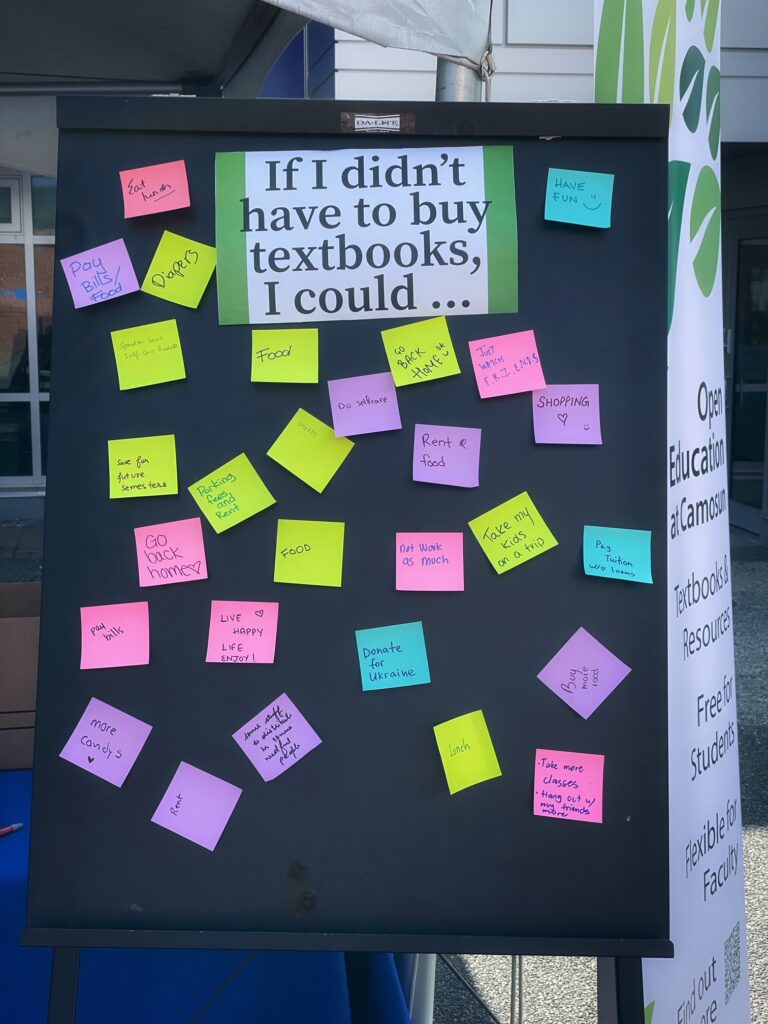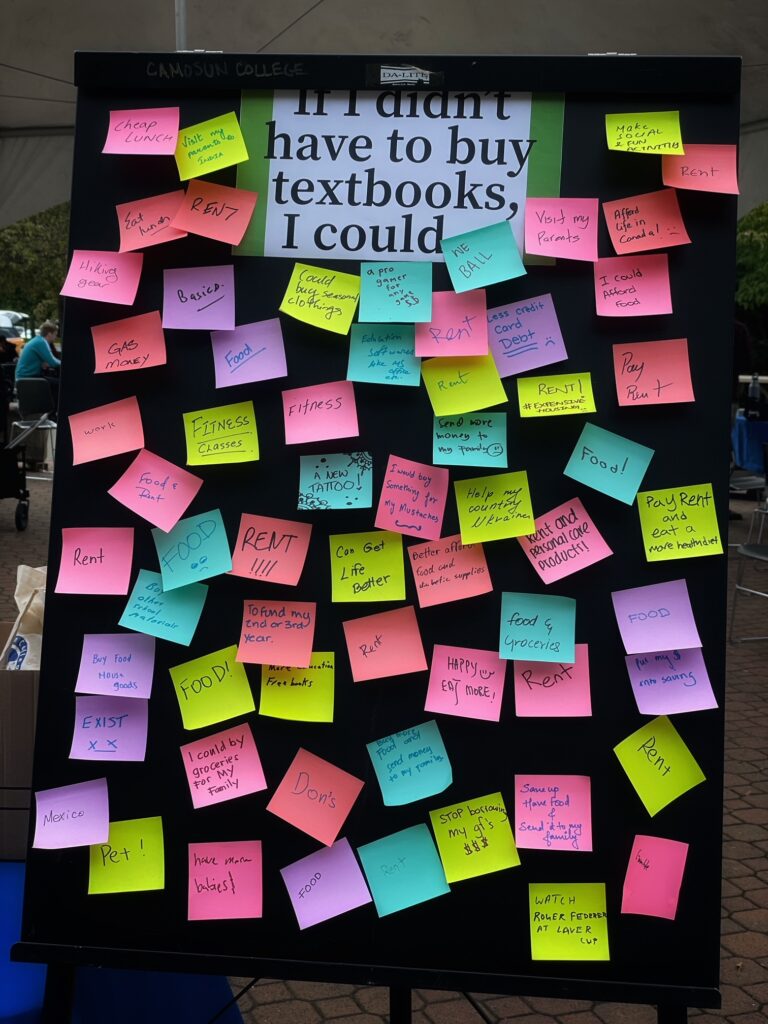This term, for the first time ever, I hosted an Open Textbook table at our annual beginning-of-the-school-year student welcome celebration (during the first week of classes) called CamFest.
I was at Interurban campus on the Wednesday and Lansdowne on the Thursday and really enjoyed interacting with students around the potential for Open Textbooks and Zero Textbook Cost (ZTC) courses and programs to save them money. While some students told me about courses they have taken that do not require costly resources, most lamented the exorbitant cost of their textbooks – one student in Nursing commenting that she paid $900 this term for her texts. And some of their stories were heart-breaking and irritation-provoking, if I am honest. Why do our students, in this day and age, have to decide between buying textbooks and paying rent? Why do they have to weigh the cost of books against passing their classes?
And then there are the online assessment tools attached to digital textbooks (or sometimes not) that many students are required to buy. Several students, one close to tears, asked me why they have to pay to do their course assessments (feels a bit like double-dipping to me…what does tuition cover again?)
I know many of you reading get it, but we need to keep spreading the word across our institutions about Open Textbooks/Open Education and working towards better supporting faculty to move to ZTC (and zero online assessment costs) courses and programs.
If I think about my own institution, Camosun College, Open Textbooks and ZTC address every one of our new Strategic Plan goals. Want to know how?
- Strengthen the Camosun Advantage, Goal 2 (Deliver outstanding flexible learning opportunities to support students’ evolving educational expectations.) Note: one identified success metric for this goal is measuring the percentage of courses using open textbooks for teaching.
- Doing Good Work Together, Goal 2 (Ensure financial sustainability for continued investment in student success.) Some of the folks working on Open Ed include: VP Student Experience, Librarians, Other folks in the Centre for Excellence in Teaching and Learning, Faculty who have been doing this work and are invested in it, Student Society, and there are many more to be added to this list!!
- Responding to Community Needs, Goal 3 (Break down systemic barriers to improve access to post-secondary education.) Open Ed opens doors for more students!
- Honouring Indigenous Resurgence, Goal 4 (Infuse Indigenous values into practices and spaces at the college.) Note, within the framework of Open Education we find Traditional Knowledge Licenses which provide licensing that honours Indigenous and cultural knowledge which traditional copyright laws do not. We have an Ed Developer with a specialization in Indigenization as well as a librarian working on Indigenous knowledge citations, etc.
- Rising to the Challenge of Climate Change, Goal 2 (Support existing programs and increase climate education across the college.) Note, there are many open education and open science resources on climate change and other important global concerns.
- Advancing Social Justice, Equity, Diversity, and Inclusion, Goal 3 (Celebrate and uphold the diversity of students and employees as a strength within Camosun’s community.) Open Ed aligns with the work of the Centre for Accessible Learning as well as with colleagues who work closely with UDL to ensure OpenEd resources are created with accessibility in mind. We have an Accessibility Committee now at the college, as well as one in Learning Services.
So, given these alignments with the principles and goals we hold dear at Camosun, can we do better for our students? I am hopeful that we can!
But now let me give voice to our students at both campuses who told me what they could do if they didn’t have to buy textbooks:


